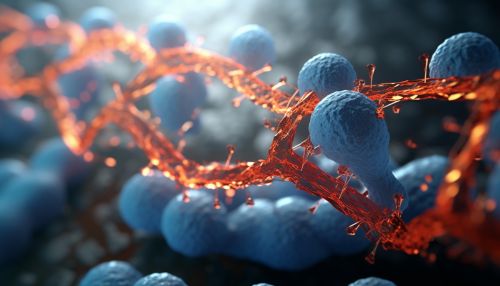Histone Modifications in Gene Regulation
Introduction
Histone modifications are a key aspect of epigenetic regulation of gene expression. Histones are proteins that DNA wraps around to form a complex called chromatin, which makes up chromosomes. Modifications to these histones can influence gene activity by altering the structure of the chromatin, thereby controlling which genes are turned on or off.


Types of Histone Modifications
There are several types of histone modifications, including methylation, acetylation, phosphorylation, ubiquitination, and sumoylation. Each of these modifications has a different effect on gene expression.
Methylation
Histone methylation involves the addition of a methyl group to the histone protein. This modification can either activate or repress gene expression, depending on the specific location and context of the methylation.
Acetylation
Histone acetylation is the addition of an acetyl group to the histone protein. This modification typically loosens the chromatin structure, making the DNA more accessible for transcription and thus promoting gene expression.
Phosphorylation
Histone phosphorylation is the addition of a phosphate group to the histone protein. This modification is often associated with DNA repair and chromosome condensation.
Ubiquitination
Histone ubiquitination involves the addition of a ubiquitin protein to the histone. This modification can influence various processes, including DNA repair, transcription, and chromatin remodeling.
Sumoylation
Histone sumoylation is the addition of a small ubiquitin-like modifier (SUMO) protein to the histone. This modification is less well understood than the others, but it is thought to play a role in gene silencing and the response to DNA damage.
Mechanisms of Histone Modifications
Histone modifications alter the structure of the chromatin, thereby influencing gene expression. The specific mechanisms by which this occurs are complex and involve a variety of proteins and processes.
Writers, Readers, and Erasers
The enzymes that add modifications to histones are known as "writers". These include histone methyltransferases, histone acetyltransferases, and others. Conversely, the enzymes that remove these modifications are known as "erasers", such as histone demethylases and histone deacetylases. In addition, there are proteins known as "readers" that recognize and bind to specific histone modifications, thereby influencing chromatin structure and gene expression.
Chromatin Remodeling
Histone modifications can influence the structure of the chromatin, a process known as chromatin remodeling. For example, acetylation of histones typically loosens the chromatin structure, making the DNA more accessible for transcription. Conversely, certain types of methylation can lead to a more compact chromatin structure, thereby repressing gene expression.
Role in Disease
Abnormal histone modifications have been implicated in a variety of diseases, including cancer, neurological disorders, and autoimmune diseases. Understanding the role of histone modifications in these diseases could potentially lead to new therapeutic strategies.
Cancer
In many types of cancer, abnormal histone modifications can lead to inappropriate activation or repression of genes. For example, overexpression of certain histone deacetylases has been observed in various cancers, leading to repression of tumor suppressor genes.
Neurological Disorders
Abnormal histone modifications have also been implicated in various neurological disorders. For example, mutations in the gene encoding the histone methyltransferase EZH2 have been associated with Weaver syndrome, a developmental disorder characterized by overgrowth and learning disabilities.
Autoimmune Diseases
In autoimmune diseases, abnormal histone modifications can lead to inappropriate activation of immune response genes. For example, in systemic lupus erythematosus, increased acetylation of histones has been observed, leading to overexpression of immune response genes.
Future Directions
Research into histone modifications continues to be a rapidly evolving field. Future directions include the development of drugs that target specific histone modifications, as well as the use of histone modifications as biomarkers for disease diagnosis and prognosis.
